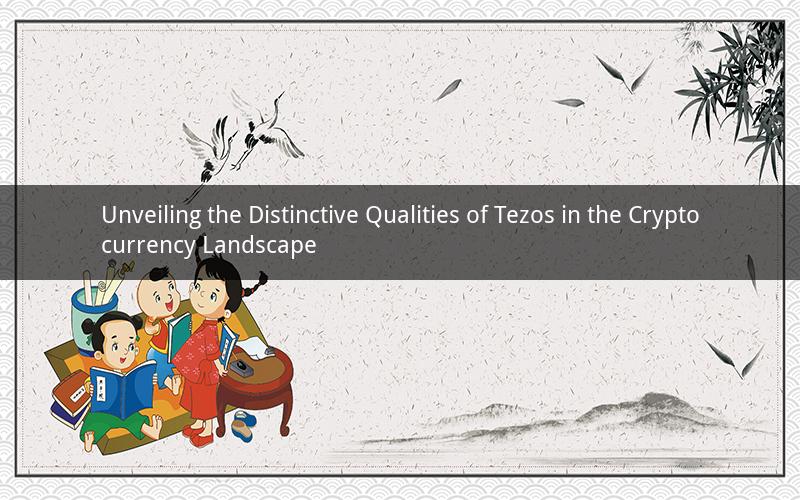
Tezos has emerged as a notable player in the world of cryptocurrencies, offering a unique value proposition that sets it apart from its counterparts. Unlike many other digital currencies, Tezos is designed to evolve and improve over time, addressing the issues that have plagued traditional cryptocurrencies. In this article, we will explore how Tezos differs from other cryptocurrencies, highlighting its distinctive features and potential impact on the industry.
1. Self-Amending Ledger
One of the most striking differences between Tezos and other cryptocurrencies is its self-amending ledger. While most cryptocurrencies rely on a centralized authority or consensus mechanism to make changes to their protocols, Tezos employs a decentralized governance model that allows its network to self-upgrade without interrupting operations. This means that any improvements or changes to the protocol can be implemented seamlessly, without the need for hard forks or significant disruptions to the network.
The self-amending ledger is a significant advantage for Tezos, as it eliminates the need for developers to reach consensus on protocol changes, which can be time-consuming and contentious. By allowing the network to evolve organically, Tezos can adapt to new challenges and opportunities as they arise, ensuring its long-term viability.
2. Decentralized Governance
Tezos differs from many other cryptocurrencies by implementing a decentralized governance model. This means that the community plays a crucial role in making decisions about the future of the network. Holders of Tezos tokens can participate in governance processes, including voting on proposals for protocol upgrades and changes to the network's rules.
The decentralized governance model ensures that Tezos can remain flexible and responsive to the needs of its community. It also helps to prevent centralized control and potential manipulation of the network, as decisions are made through a transparent and inclusive process.
3. On-Chain Voting
Another key difference between Tezos and other cryptocurrencies is its on-chain voting mechanism. This allows holders of Tezos tokens to participate in governance directly, without the need for external platforms or intermediaries. By incorporating voting into the blockchain itself, Tezos promotes transparency and security, as the results are immediately visible to all network participants.
On-chain voting also helps to ensure that the interests of the community are represented in decision-making processes. This is a significant departure from many other cryptocurrencies, which often lack a clear mechanism for community involvement in governance.
4. Smart Contracts and DApps
Tezos supports smart contracts and decentralized applications (DApps), similar to Ethereum and other blockchain platforms. However, there are some notable differences in how Tezos approaches this aspect.
Tezos's smart contracts are designed to be more efficient and secure than those on other platforms. This is due to the use of a formal language for defining smart contracts, which helps to prevent vulnerabilities and errors. Additionally, Tezos's smart contracts can be upgraded, ensuring that they can adapt to new requirements and technologies without the need for forking.
5. Energy Efficiency
Energy consumption is a significant concern in the cryptocurrency industry, with many traditional cryptocurrencies facing criticism for their high energy demands. Tezos aims to address this issue by employing a proof-of-stake (PoS) consensus mechanism, which is generally more energy-efficient than the proof-of-work (PoW) systems used by many other cryptocurrencies.
By reducing energy consumption, Tezos contributes to a more sustainable and environmentally friendly cryptocurrency ecosystem. This is an important factor for many investors and users, as it helps to mitigate the environmental impact of blockchain technology.
5 Questions and Answers
Q1: How does Tezos's self-amending ledger compare to other cryptocurrencies' upgrade processes?
A1: Tezos's self-amending ledger allows the network to upgrade itself without requiring hard forks or interruptions in operations. This is a significant advantage over many other cryptocurrencies, which often face lengthy and contentious processes for implementing protocol changes.
Q2: What is the primary benefit of Tezos's decentralized governance model?
A2: The decentralized governance model ensures that the interests of the community are represented in decision-making processes, and that the network remains flexible and responsive to evolving needs. It also helps to prevent centralized control and potential manipulation of the network.
Q3: How does Tezos's on-chain voting mechanism enhance transparency and security?
A3: On-chain voting ensures that the results of governance processes are immediately visible to all network participants, promoting transparency and security. It also eliminates the need for external platforms or intermediaries, reducing the risk of manipulation or fraud.
Q4: What are the key differences between Tezos's smart contracts and those on other platforms?
A4: Tezos's smart contracts are designed to be more efficient and secure, with the use of a formal language to define contracts and prevent vulnerabilities. They can also be upgraded, allowing for adaptation to new requirements and technologies without forking.
Q5: How does Tezos address the issue of energy consumption in the cryptocurrency industry?
A5: Tezos employs a proof-of-stake (PoS) consensus mechanism, which is generally more energy-efficient than the proof-of-work (PoW) systems used by many other cryptocurrencies. This contributes to a more sustainable and environmentally friendly cryptocurrency ecosystem.